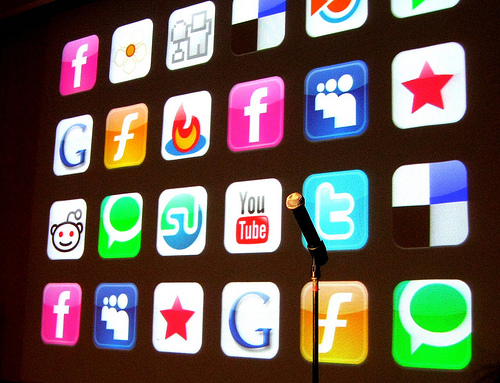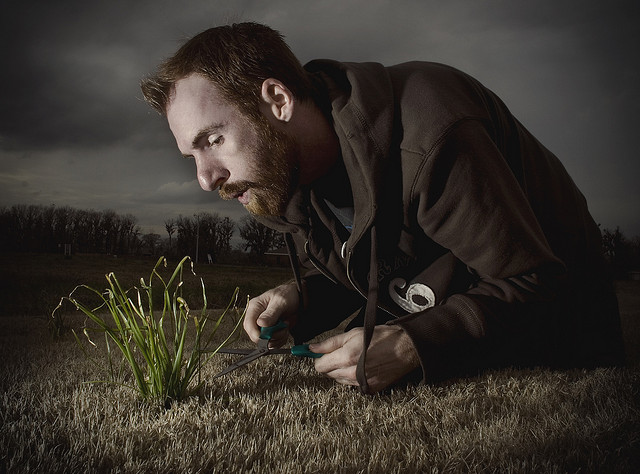
“Content is King” right? Right. If you’re creating something — anything — it’s got to be quality if you want to attract an audience. And while the rise of the internet has brought many positives into our lives, there are some serious negatives to be dealt with as well. When it comes to building your audience, the chief challenge is noise. The internet and every social network is already swimming with content begging for eyeballs. Case in point, right now, 100 hours of video are uploaded to YouTube every minute. And that number keeps going up.
So how can you cut through the noise and access your audience more directly? Here are some tips that can help:
1. HTTP://WWW.SEARCH.TWITTER.COM
While Gary can be abrasive, he has a point. Twitter has become a tonal representation of the general perception of everything from entertainment to tacos and the search feature can be an incredibly powerful tool when used correctly. If you’re a content creator, you need to be using search.twitter.com to find your audience. That’s your first step; if you can’t find your audience, you don’t understand them. And if you don’t understand your audience, you can’t begin to build it (not to mention tell them the story you’re trying to tell)! Use Twitter to learn about them and create access points.
Let’s say you’re writing a comic book in the vein of Y: The Last Man. You can use search.twitter.com to find people who are fans of that book and start engaging. Please do not take the word “engage” to mean “sell”. I’m not suggesting you start tweeting “If you liked that, you’ll LOVE my book!” (See point #3 below.) Twitter is a conversation and you’re welcome to join it with your own opinions or even by simply following the people who are talking about it. When someone gets a new follower, they’re going to check them out. And your description already has a link to your website, right?
2. PICK YOUR PLATFORM

photo credit: Matthew Burpee via photopin cc
This one might be a little obvious for some, but there’s still some strong advice out there suggesting you should be on every social network. That’s silly. It dilutes your content and makes you appear confused about your own deployment strategy. If you’re a writer, Pinterest isn’t your first stop. If you’re a photographer, your YouTube channel probably shouldn’t be getting more of your attention than your Flickr account.
Facebook has become a content platform for virtually anything and Twitter has become the conversation about it. Both are still integral, but after them, make sure you think strategically about where you are cultivating an audience.
3. GIVE
This is a concept that still baffles some brands, it seems. Don’t ask, ask, ask. When I see a Facebook page with nothing but updates about the newest products available, I have to shake my head. Those posts alone aren’t a bad thing and when the time is right, you do need to make The Ask. But five to ten times more often, you need to be giving.
It doesn’t have to be a contest or a coupon, but it does need to be something of value. Maybe it’s a cat picture, maybe it’s something that offers a chuckle, or maybe it’s a link to the best way to clean your oven.
This is why we all hate telemarketers so much. They intrude on your life and demand something from you without giving anything at all before their Ask.

photo credit: LeonArts.at via photopin cc
As you build your audience, your relationship with them becomes more and more important. How do you want to be known? The filmmaker who taught their audience how to edit their own videos, or the beggar who only seems to want their audience to donate to a Kickstarter campaign?
4. SOLVE A PROBLEM
Which brings us to one of the best ways to give: problem solving. Maybe you’re a comic book artist who knows the trick to drawing killer biceps every time. Or maybe you’re running a movie blog and you’ve got a nice “Best Gangster Movies of The Last Ten Years” list. Search.twitter.com can help you find people who are asking questions you already have the answers to. And suddenly, you’ve engaged with someone who immediately values you and your content. The more problems you solve, the bigger your audience can get. But be warned… audience building is hard, repetitive and often boring work.
One of the topics I really enjoy outside of filmmaking is Apple products. Sometimes, I’ll get on Twitter and help people with their iPhones. Do you know how many times I’ve answered questions about how to sign out of Twitter on the iPhone? I don’t. But it has helped me build my modest following, which I leverage when it’s appropriate.
5. BLOG
You’ve probably already figured it out. The very blog you’re reading right now is all about building the Full Swing Productions audience. It’s been the single best way to drive traffic to our website and it’s become a great platform to give and start solving problems. There’s plenty more to blogging and, to be honest, we’re still learning. But the broad strokes are in bold. Provide value, and your audience will grow.

photo credit: Stephen Poff via photopin cc
In addition to these “20 Tips to Build Your Blog Audience” from Heidi Cohen, I would certainly add a tip about Hashtagging. It’s important to note that Facebook and Twitter use Hashtags to group conversations and that’s dandy. But what shocked us was the way they can be used to spread your content or blog outside of Facebook or Twitter. Keep in mind there are bots out there constantly refreshing certain hashtags purely to find useful, sharable content. If the right bot finds your hashtag, you could see your post blow up in a big way!
The featured image on this post was taken by Florian Gopp
ShareFEB


About the Author:
Matt Watterworth a is a 28-year-old filmmaker in Alberta, Canada. He graduated from the SAIT Polytechnic Film & Video Production Program in 2008 and followed that up with 4 years learning from the brilliant minds at one of Canada's top ten production companies. He claps better than anyone you know and, tragically, still wishes to be Batman.